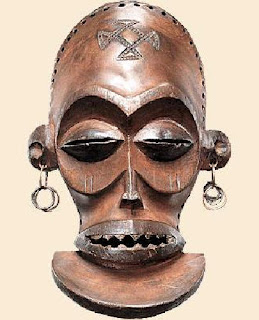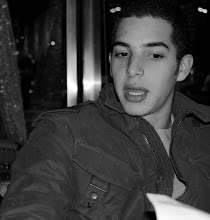Initially, Fanella, took us to a realism gallery dating from the 1800s. She explained that since the time of the renaissance until the late 1800s, realism was emphasized by the artist. It was encouraged to depict subjects as they appeared in everyday life without any unique signature touches of the artist. This objective reality condemned any deviations that may have expressed the artist's own impressions or emotions. She pointed out some techniques involved in realism, which was particularly objects closer to us, the viewer, entailed a much higher level of detail and that the colors for these objects were much saturated. As one looks into the distance of a landscape, for instance, the colors tend to blemish, become diluted, and the details are not so precise. This would allow the effect of proportionality to take place since the greater the distance, the less clear objects become. Fanella gave the example of road signs; the further they are, they less we can make out what they say. Notice this painting by Millet, titled the Gleaners, where is is very classical realism, but one can make out the details of the women, the colors of their clothing and hats, whereas the distance looks blemished and the colors are fading in contrast to the deep rich colors of the women's clothing.

We were next taken to a gallery of Modern American Impressionism and Urban Realism. This was a much richer type of art in my eyes. The impressionist works we viewed endeavored to capture the experience, or rather the impressions, or the artist. There tends to be much more fluidity, dynamism, and activity in life. It is for this reason, artists attempted to capture this reality by from how we perceive, not merely by how it appears. Impressionism gives us a different sensational feeling than realism and it is for this reason that it deviates drastically from how an object might appear from reality, on the path to abstraction. These paintings were marked with a collage of brushstrokes of different colors, almost appearing like pixels of a digital photograph. The more brushstrokes, the more intense the detail. Moreover, impressionist art overemphasized certain aspects of a painting, such as the emphasis on light. Also, aspects of life that we may perceive to be something ordinary take on a whole new dimension because the artist is attuned on a different frequency level than we are. He captures the reflections, sparkles, current, waves of water with a plethora of colors that defies our expectations of water being simply blue and green. For example, this painting of Monet:

reveals the water to have strands of green, blue, white, brown, black, and even orange to represent the reflection of the setting sun. The human experience is what is emphasized in this genre of art, especially in terms of the angles and perceptions through which the artist visualizes this art. This was a revolution in the art world and it evolved much more outdoors painting simply so that the artist could live the experience and transmit it on canvas.
Our last tour for the day was that of the cubist gallary, which encompassed various modernist paintings of Picasso and Braque, the artists who spearheaded cubism. Inspired by recently imported art from Africa, especially African masks, cubism was a new way for artists to express their perception of the human body into various dimensions. Breaking up the body included realizing that it was a creation of different components with different shades, volumes, and overall specifications. Notice the rigidity and segmentation of the human face in this African mask:

Cubism attempted to breakdown and capture the simplicity and segmentation of the human figure, essentially into cubes. This was a radical and influential deviation from all precedent forms of art. Moreover, human figures tend to be abiguous because the visual images of the human body tend to split up, drawn from different angles, and reassembled to create one object from multiple angles. This allows breadth of insight into the understanding of the artist's perception of the object. One object, drawn on the same canvas from different angles becomes multiple objects morphed into one. Cubism is the as abstract as we'd gotten so far as it times time, pondering, and contemplation to interpret the movement, animation, and story behind each cubist artwork. The following is a cubist portrait of the master of cubism, Picasso:

Our attempt for today's drawing session was to capture still life from a multitude of dimensions, while giving it a cubist and abstract touch. Since we couldn't afford hiring a model to pose for us, we had to settle with stuffed animals for the time being. I picked a stuffed teddy rabbit as my object. Our mission was to capture the three-dimensional, active, movement of this still object. The action would not necessarily be a result of the rabbit moving, but rather, our perception of the rabbit from different angles and with different drawing techniques. Firstly, we drew the objects from one fixed position with a single stroke of a pencil, without ever removing it from the paper; we then drew the object from a different position, with a different colored pencil, this time without looking. Lastly, we drew the same object from a diametrically opposite angle. We then shaded the three rabbits in with the respective colors. At this point, we attempted to morph the three rabbits into one. We did this by mixing and matching the rabbits so as to give them life and animation. Below is my attempt:

I understand that my drawing may come across as a bunch of kindergarten scribbles, but it was my attempt at emulating the perceptions of art I had absorbed for the day. It is through these endeavors, which may seem silly, that I feel like I am stretching my imagination and gaining more confidence in my creations.

No comments:
Post a Comment